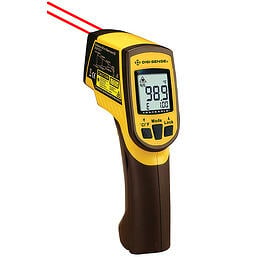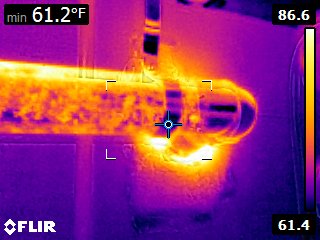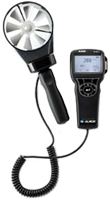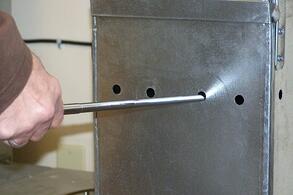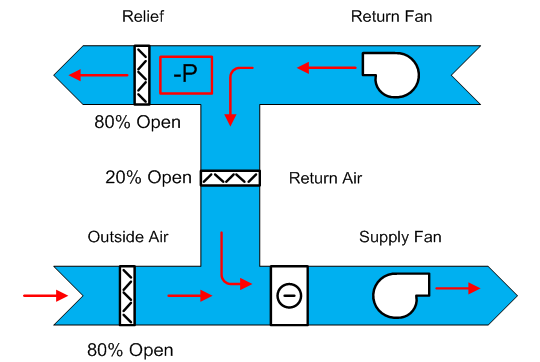Engineers and energy managers use many different types of instruments to help identify energy efficiency opportunities in an existing facility. Loggers that have been discussed in previous blog posts are a good way to assess how building equipment performs over time, but I am going to talk about some measurement tools for energy audits and RCx (retrocommissioning) that can be used to instantaneously identify potential issues that can lead to higher than needed energy use.
Temperature Measurement Devices
As simple as this one may seem, thermometers are a vital piece of instrumentation that is used on nearly every site visit. There are a few different kinds of thermometers these days beyond the traditional mercury bulbs you may remember. Thermocouple probes are useful when air temperature in a space or in ductwork is needed. Infrared thermometers are great for finding surface temperatures, particularly surfaces that are hard to reach. There are also infrared cameras that can be used to visualize the temperature differences of surfaces in a room. Thermometers can be used to help anything from failed temperature sensors, to steam traps that have failed open.
Light Meters
Light meters are a great tool for identifying over-lit areas in facilities. Identifying over-lit areas can be the easiest way to reduce energy use in a building by simply removing lamps or installing lower wattage bulbs to reduce the wattage being consumed by the lighting. These meters are usually simple to operate and measure in units of foot-candles or lux. The light levels being metered should be measured at the work surface level to get the correct reading.
Air Velocity Meters
Air velocity meters come in a variety of types such as Anemometer, Hot Wire Anemometer, Heated Thermocouple, and Pitot Tube. Each type has its advantages and drawbacks, depending on the application in which it will be used. They can help to identify leakage in ductwork, and identify if there is too much or too little air flow from an air handler. If an air handler is found to have a higher airflow than needed, there is an opportunity to slow down the fan motor and achieve energy savings.
Measurement Tools for Energy Audits and RCx
These are a few of the main types of tools that engineers and energy managers use to help identify energy savings opportunities in commercial facilities. I'll save for a future post less common tools such as multimeters, leak detectors, and combustion analyzers that can also be valuable during energy audits and retrocommissioning projects.

